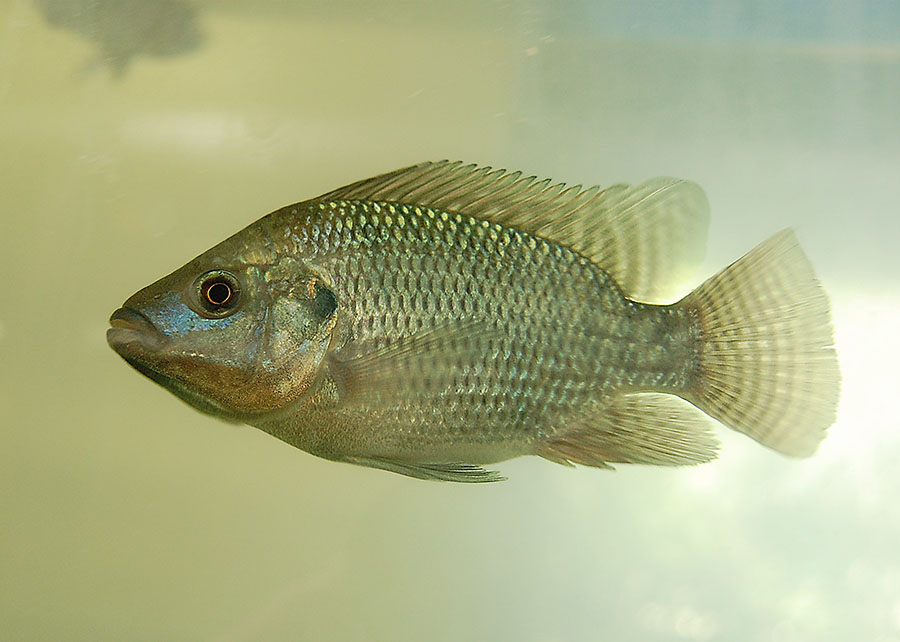Embrapa Environment
Notícias
Citric acid improves tilapia feed quality
Photo: Gabriel Pupo Nogueira

Tilapia intestinal morphology was positively affected by the supplementation, which suggests an improvement in their gastrointestinal health.
|
Research conducted by scientists from Embrapa Environment and the State University of Mato Grosso do Sul (UEMS) has shown promising results in the use of citric acid as a feed additive in tilapia diets. The study demonstrated that citric acid supplementation improved the availability of phosphorus by over 42% and of calcium by over 47%. Moreover, tilapia intestinal morphology was positively affected by the supplementation, which suggests an improvement in their gastrointestinal health.
Citric acid is an organic acid that has a reasonable cost and a pleasant taste. It has been used as a feed additive for several animal species of zootechnical interest. However, there is little information available on its use for aquatic organisms. Therefore, the study focused on assessing its effects on the growth and health of Nile tilapia (Oreochromis niloticus), the most produced fish species in Brazil.
According to the study coordinator, the Embrapa researcher Hamilton Hisano, in addition to significantly contributing to improving the availability of phosphorus and calcium, the addition of citric acid to tilapia feed also positively impacted such fish’s intestinal morphology. “While citric acid supplementation does not significantly impact tilapia’s growth or body composition, the better use of several macrominerals — especially phosphorus— is essential for the development of environmentally-friendly diets, as it limits the release of phosphorus into aquatic ecosystems, which is one of the main polluters in those environments”, Hisano reports.
 Other benefits of supplementation with citric acid include improvements in the immune status of the fish, a fact that can contribute to reducing the use of antimicrobial agents in production and thus favor the image of the product in the consumer market, once the use of such substances in animal feed is a cause for concern around the world due to risks to human health, explains Ricardo Borghesi, a researcher at Embrapa’s sector of Partnerships for Innovation.
Other benefits of supplementation with citric acid include improvements in the immune status of the fish, a fact that can contribute to reducing the use of antimicrobial agents in production and thus favor the image of the product in the consumer market, once the use of such substances in animal feed is a cause for concern around the world due to risks to human health, explains Ricardo Borghesi, a researcher at Embrapa’s sector of Partnerships for Innovation.
Some of the research activities were part of Israel Cardoso's master's degree in Animal Science from UEMS. “This pioneering study shows the potential of those food additives in aquaculture, paving the way for sustainable and healthy fish production”, Cardoso states.
Part of the study was funded by the BRS Aqua project, which aims to strengthen Embrapa's research infrastructure to generate and transfer technologies for the development of Brazilian aquaculture, with a primary focus on innovation, contributing to increased production and providing higher competitiveness and sustainability in the domestic fish chain.
Study authorsThe authors are Hamilton Hisano, Giovanni Ferri and Alex Júnio Cardoso, from Embrapa Environment; Israel Cardoso and Michelly Pereira Soares, from the State University of Mato Grosso do Sul; and Ricardo Borghesi, from Embrapa. The full study can be accessed here. |
Citric acid is generally incorporated into dietary feeds at the concentrations of 1%, 2%, 3% and 4%. The additive is especially used for its beneficial effects on animal growth.
“We have been working intensely to improve the absorption of calcium and phosphorus, focusing especially on phosphorus, which is an aquatic pollutant. We are mindful of the global trend for the development of more eco-friendly feeds. This approach paves the way for the establishment of a Low Environmental Impact Feed seal”, Hisano anticipates. To that end, the researcher asserts that certifiers should consider how feed additives can not only promote fish growth and health, but also minimize environmental impacts.
Cristina Tordin (MTb 28.499/SP)
Embrapa Environment
Press inquiries
meio-ambiente.imprensa@embrapa.br
Phone number: +55 19 3311-2608
Translation: Mariana Medeiros (13044/DF)
Embrapa's Superintendency of Communications
Further information on the topic
Citizen Attention Service (SAC)
www.embrapa.br/contact-us/sac/
